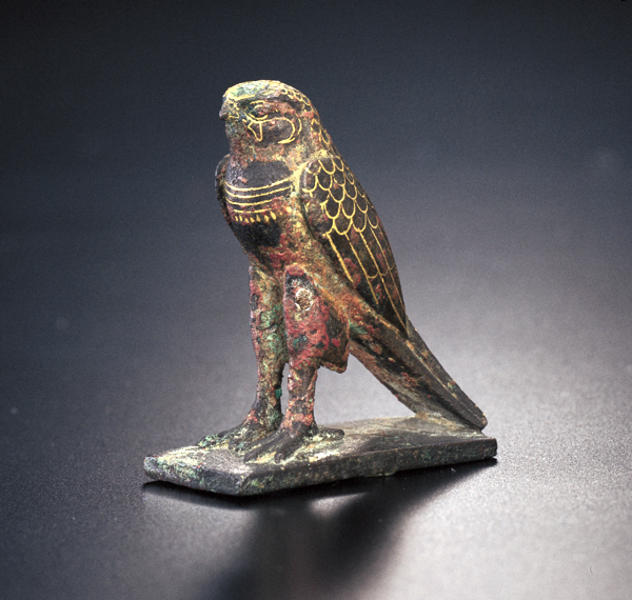Miniature Statuette of Horus as a Falcon
- Egypt
- Egypt, Dynasty 26 - End of Ptlemaic period
- 664 - 30 B.C.
- Bronze with gold inlays
- H-4.8 D-2 W-4.3
Catalogue Entry
The god Horus was magically conceived by the goddess Isis after her husband Osiris's death with the aid of the appropriate part of the deceased's body. When a pharaoh died he was associated with the god Osiris, and the living king was associated with Horus. This was also true of the sun, which was Osiris after it set, and Horus as it passed through the sky during the day.
It is perfectly appropriate that the ancient Egyptians chose the falcon, which is capable of easily soaring through the sky at high altitudes, as Horus's sacred animal. The falcon was one of the animals used as a totem in prehistoric Egypt, and so it is the most ancient of the gods represented in the Shumei collection. Horus was eventually worshipped throughout Egypt, but his most complete and best-known temple today is the one at Edfu in southern Egypt. Bronze falcon statuettes are among the most common animal figurines remaining from ancient Egypt.1
This tiny bronze representation of the sacred bird is beautifully crafted, with its feathers and other markings picked out in gold inlays. It became common during the Late Dynastic Period (about 715-332 B.C.) for bronze falcons to wear necklaces, and this one is decked with an elaborate multistranded affair with a bottom row of pendant, teardrop-shaped beads.
The falcon's eye markings are emphasized with gold inlay. This is important because Horus's eyes were considered to be the sun and the moon. The eye of Horus became one of ancient Egypt's most popular amulets or charms worn to safeguard good health. The top of the head is partially covered with gold foil.
APK
1. For other examples see Steindorff 1946, pp. 149-51, pls. XCIX-CI, nos. 656-78; Roeder 1937, p. 62, pl. 36.
